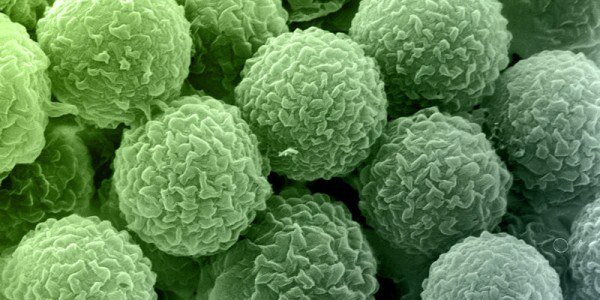Allergy to molds

Allergy to moulds is primarily a reaction of the body, of its immune system in contact with mold fungi.
This exposure can take place by ingesting molds in food or the respiratory tract of a person. On planet Earth, mold spores are the most common inhabitants.
Molds inhabit many places, not just, as is commonly believed, damp basements or closed rooms. They can easily be found on the street among fallen autumn leaves, in homes among damp papers or books, fabrics and in food scraps.
Molds are formed during the formation of fungal spores. And this period represents the greatest danger for those whose body reacts aggressively to such irritants.
To date, scientists have discovered about 12 types of mold-forming fungi, and all of them have been found to be dangerous allergens. The greatest probability of contact with molds occurs in the premises where a person lives and works.
It is there that favorable conditions are created for the reproduction and growth of mold fungi.
What are the symptoms?
The symptoms and manifestations of mold allergy in each person can be completely individual. Due to the manifested allergic disease, it is of varying severity.
Most often, molds enter the human body through the respiratory organs and the allergic reaction manifests itself in the respiratory tract.
And if at the beginning the allergic disease, expressed in hypersensitivity to molds, can easily be mistaken for a common cold, since it starts with a mild runny nose, then later the breathing process becomes difficult, the frequency of sneezing increases, the sinuses become inflamed, it develops sinusitis.
Also, the person allergic to molds begins to cough, and the cough is accompanied by the release of sputum. In the later stages, the appearance of excessive tearing and inflammation of the eyes is possible.
If the allergen gets into the body after contact through the skin, itchiness and swelling may appear in the places of contact, and in more severe cases, a rash may appear and even urticaria may develop.
In people suffering from bronchial asthma, molds can cause its exacerbation. And this is the most dangerous consequence of mold allergy.
Treatment of mold allergy
Therapeutic methods used in this allergic disease are medications and preventive measures.
If a person has doubts that he suffers from such an allergy, he should, first of all, contact his personal doctor and then an allergist, who will confirm the diagnosis.
A number of medicinal preparations are prescribed in order to control the manifestation of symptoms and rid the body of irritating allergens. In addition to antihistamine preparations, antifungals such as itraconazole are also sometimes prescribed.
The attending physician may also recommend undergoing a course of immunotherapy to strengthen the immune system so that it is more resistant to mold allergens.
There is also another method for treating this type of allergy – the strict diet.
That is, all food products containing mold fungi such as bread, beer, vinegar, lactic acid foods, many types of cheeses and yellow cheeses, champagne, wines, sauerkraut, etc. must be completely excluded from the patient’s diet.
Prevention
Preventive measures refer to numerous measures and methods that prevent contact with allergenic mold fungi.



